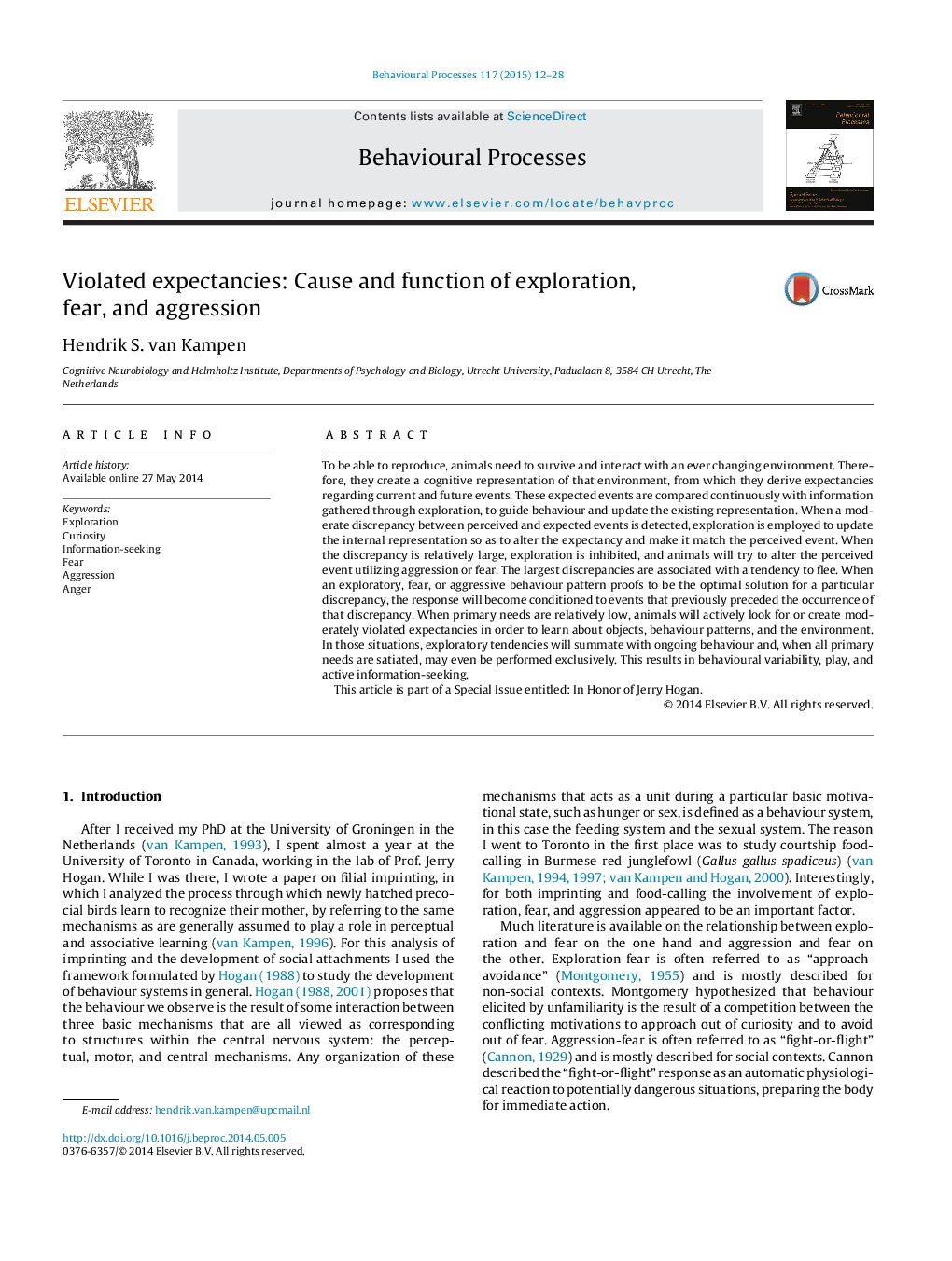| Article ID | Journal | Published Year | Pages | File Type |
|---|---|---|---|---|
| 2426549 | Behavioural Processes | 2015 | 17 Pages |
•Expected events are compared continuously with information gathered from the environment through exploration.•A discrepancy between expected and perceived events triggers exploration, fear or aggression to solve the violated expectancy.•Exploration guides behavioural output and updates the expected event.•Aggression forcefully manipulates the perceived event into matching the expected event.•Fear alters the perceived event by removing it from the perceptual field.
To be able to reproduce, animals need to survive and interact with an ever changing environment. Therefore, they create a cognitive representation of that environment, from which they derive expectancies regarding current and future events. These expected events are compared continuously with information gathered through exploration, to guide behaviour and update the existing representation. When a moderate discrepancy between perceived and expected events is detected, exploration is employed to update the internal representation so as to alter the expectancy and make it match the perceived event. When the discrepancy is relatively large, exploration is inhibited, and animals will try to alter the perceived event utilizing aggression or fear. The largest discrepancies are associated with a tendency to flee. When an exploratory, fear, or aggressive behaviour pattern proofs to be the optimal solution for a particular discrepancy, the response will become conditioned to events that previously preceded the occurrence of that discrepancy. When primary needs are relatively low, animals will actively look for or create moderately violated expectancies in order to learn about objects, behaviour patterns, and the environment. In those situations, exploratory tendencies will summate with ongoing behaviour and, when all primary needs are satiated, may even be performed exclusively. This results in behavioural variability, play, and active information-seeking.This article is part of a Special Issue entitled: In Honor of Jerry Hogan.
